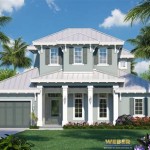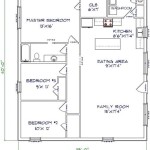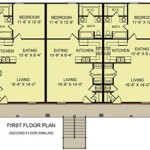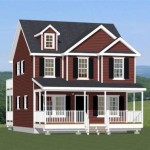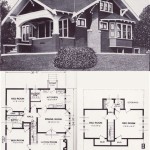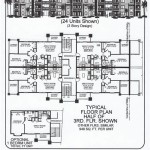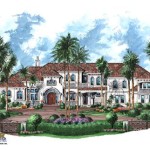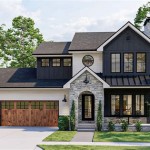A-Frame House Floor Plan: Design, Functionality, and Considerations
The A-frame house, characterized by its distinctive triangular shape resembling the letter "A", has experienced enduring popularity, evolving from vacation retreats to potential primary residences. The appeal lies in its simplicity, affordability, and structural efficiency. A crucial aspect of any A-frame home is its floor plan, dictating the functionality and livability of the space. Understanding the nuances of A-frame floor plans is essential for anyone considering building or renovating one of these unique structures.
The architectural characteristic of the A-frame design, with its steeply sloping roof extending to the ground, inherently influences the floor plan. This design maximizes vertical space but also presents challenges in terms of usable square footage, particularly on the upper levels. The floor plan must effectively address these limitations while optimizing natural light and interior flow.
Commonly, A-frame homes feature an open-concept layout on the main level, encompassing the living room, dining area, and kitchen. This open design leverages the height of the structure to create a sense of spaciousness. The upper level, typically a loft space, is often used as a bedroom or additional living area. The basement, if present, provides additional space for bedrooms, storage, or recreational purposes.
The design considerations for an A-frame floor plan differ significantly from traditional rectangular houses. Maximizing natural light, accounting for sloping walls, and strategically placing essential living spaces are critical elements that must be carefully considered. Furthermore, the overall dimensions of the A-frame, including its width and height, directly impact the available interior space and the feasibility of certain design features.
Key Point 1: Optimizing Space in A-Frame House Floor Plans
The effective utilization of space is paramount in A-frame house floor plans due to the inherent limitations imposed by the triangular structure. The sloped walls significantly reduce usable floor space, especially on upper levels. Therefore, the strategic placement of furniture, the use of built-in storage solutions, and the incorporation of multi-functional spaces are crucial for maximizing efficiency and creating a comfortable living environment.
Built-in storage, such as shelving units integrated into the wall cavities created by the sloping roof, can provide ample storage without sacrificing valuable floor space. Furthermore, utilizing furniture with storage capabilities, such as beds with drawers or ottomans with hidden compartments, can further enhance space optimization. The verticality of the A-frame structure can also be leveraged by incorporating high shelves or utilizing vertical storage solutions to maximize storage capacity.
Open-concept layouts are frequently employed in A-frame homes to create a sense of spaciousness and facilitate the flow of natural light. By eliminating interior walls and combining living, dining, and kitchen areas, the floor plan can feel larger and more inviting. However, careful attention should be paid to zoning and defining distinct functional areas within the open space. This can be achieved through the strategic placement of furniture, the use of area rugs, and variations in flooring materials.
The upper level, often a loft space, presents unique challenges in terms of space optimization. The sloping roof significantly reduces headroom, particularly towards the outer edges of the loft. To mitigate this issue, the loft can be designed with a central area that provides adequate headroom, while the outer edges can be utilized for storage or sleeping areas. Dormers, which are roof extensions that create vertical walls and windows, can also be incorporated to increase headroom and bring in more natural light.
Basements, if included in the A-frame design, can provide valuable additional living space. The basement can be utilized for bedrooms, recreation rooms, or storage, effectively expanding the overall footprint of the house. It is essential to ensure proper insulation and waterproofing to prevent moisture problems and create a comfortable living environment in the basement.
Key Point 2: Maximizing Natural Light in A-Frame House Floor Plans
Natural light is a vital element in any home design, and it is particularly important in A-frame houses due to the potential for dark and enclosed spaces. The inherent design of the A-frame, with its steeply sloping roof, can limit the amount of natural light entering the interior. Therefore, the strategic placement of windows and the incorporation of other light-enhancing features are essential for creating a bright and airy living environment.
Large windows, particularly on the gable ends of the A-frame, can maximize the amount of natural light entering the interior. These windows can be placed strategically to capture sunlight throughout the day, illuminating the living spaces and reducing the need for artificial lighting. Skylights are another effective way to bring natural light into the interior, particularly in areas where traditional windows may not be feasible. Skylights can be incorporated into the roof to provide overhead illumination, brightening up the space and creating a more inviting atmosphere.
Dormers, as mentioned earlier, not only increase headroom but also provide an opportunity to incorporate additional windows. Dormers can be designed to complement the A-frame's architecture while maximizing natural light. The placement and size of the dormer windows should be carefully considered to ensure optimal light penetration and aesthetic appeal.
The interior design can also play a significant role in maximizing natural light. Light-colored walls and ceilings reflect light more effectively, making the space feel brighter and more open. Conversely, dark colors absorb light, which can make the interior feel smaller and more enclosed. The use of mirrors can also help to reflect light and create the illusion of more space.
Maintaining clear window views is essential for maximizing natural light. Overgrown landscaping or obstructions outside the windows can block sunlight and reduce the amount of light entering the interior. Regular trimming of trees and shrubs can help to ensure that windows are unobstructed, allowing maximum natural light to penetrate the space. Additionally, choosing light-colored window treatments, such as sheer curtains or blinds, can allow natural light to filter through while providing privacy.
Key Point 3: Functionality and Flow in A-Frame House Floor Plans
The functionality and flow of the A-frame floor plan are crucial for creating a comfortable and livable space. The layout should be designed to facilitate easy movement between different areas of the house, while also providing adequate space for various activities. Careful consideration should be given to the placement of essential living spaces, such as the kitchen, bedrooms, and bathrooms, to ensure they are conveniently located and easily accessible.
The open-concept layout, as previously discussed, promotes a sense of spaciousness and facilitates the flow of movement. However, it is important to define distinct functional areas within the open space to prevent the area from feeling chaotic and disorganized. The strategic placement of furniture, the use of area rugs, and variations in flooring materials can help to delineate different zones and create a more cohesive and functional living environment.
The kitchen is a central hub in any home, and its functionality is particularly important in an A-frame house. The kitchen should be designed with ample counter space, storage, and efficient layout. The layout should allow for easy movement between the cooking area, the sink, and the refrigerator. A kitchen island can provide additional counter space and storage, while also serving as a central gathering point.
The placement of bedrooms and bathrooms should be carefully considered to ensure privacy and convenience. Bedrooms should be located in areas where they are shielded from noise and activity, such as on the upper level or in the basement. Bathrooms should be easily accessible from the bedrooms and living areas. The location of the bathrooms should also consider plumbing accessibility to minimize construction costs and complexity.
The entryways to the A-frame should be designed to be both functional and welcoming. A mudroom or entryway area can provide a place to store coats, shoes, and other outdoor gear, preventing them from cluttering the living areas. The entryway should also be well-lit and inviting, creating a positive first impression for visitors.
Accessibility is another important consideration in A-frame floor plans. Stairs leading to the upper level or basement can be challenging for individuals with mobility issues. Incorporating ramps or elevators can improve accessibility and make the house more suitable for people of all ages and abilities. The width of doorways and hallways should also be considered to ensure they are wide enough to accommodate wheelchairs or walkers.
In conclusion, the A-frame house floor plan presents unique design challenges and opportunities. By carefully considering space optimization, natural light maximization, and functional flow, it is possible to create a comfortable, livable, and aesthetically pleasing A-frame home.

A Frame Cottage Plans For Guest House Temp Cabin Plan

Prefab Small Homes On Instagram A Frame House Plan No 86950 By Familyhomeplans Com Total Living Area 1272 Sq Ft 3 Bedrooms And 1 5 Bathrooms Interior Plans

A Frame Floor Plan 1 Bedrm Bath 908 Sq Ft 146 1841

2 Bed Contemporary A Frame House Plan With Loft 35598gh Architectural Designs Plans

A Frame House Plans Everything You Need To Know Field Mag

Plan 43048 A Frame Style With 3 Bed 2 Bath

A Frame House Plans Free Cabin Floor

Cozy Winter Cabins A Frame House Plans And More Houseplans Blog Com

Classic Design For A Low Budget Frame Project Small House

A Frame Style Plans Vacation Type House

